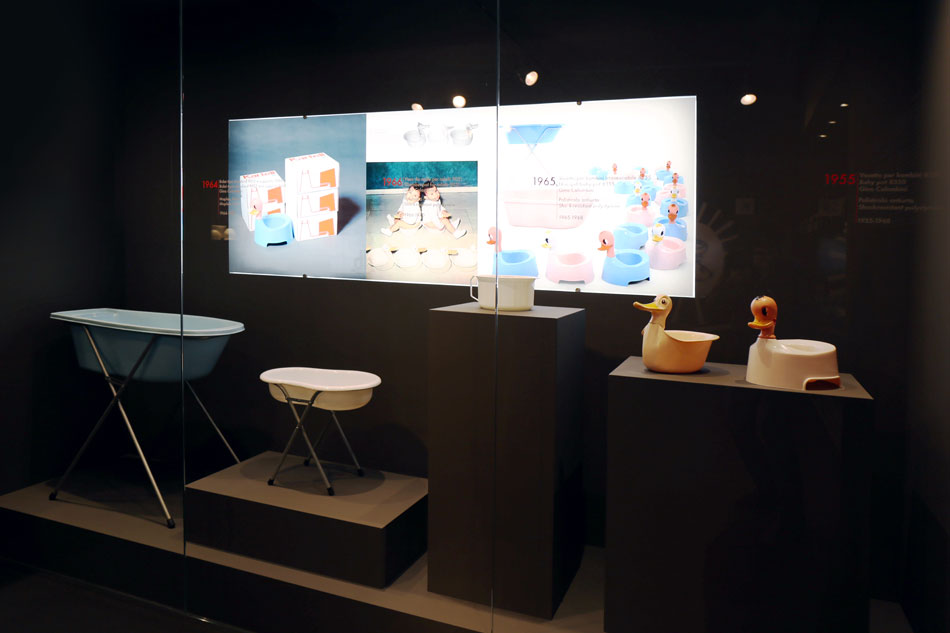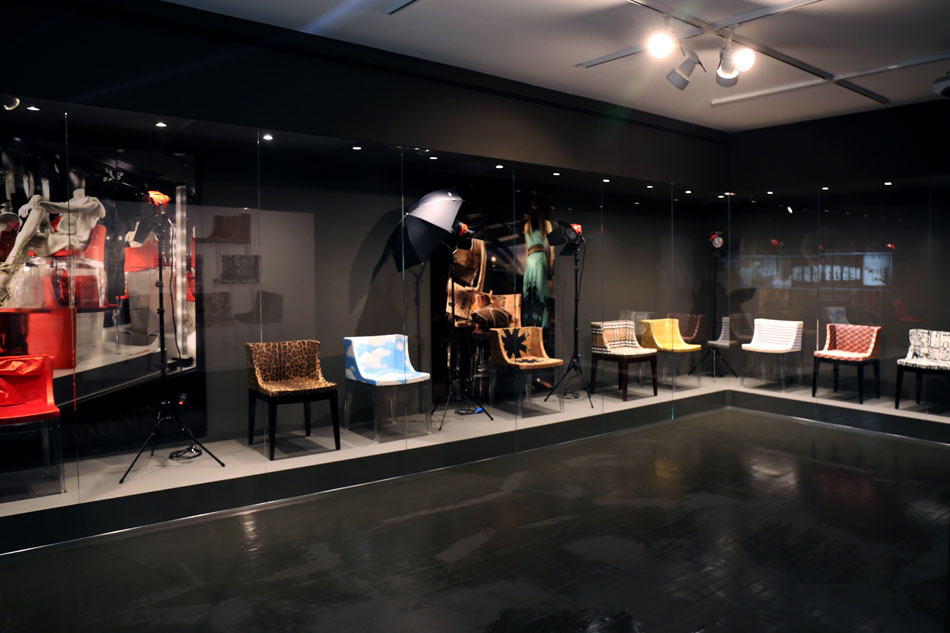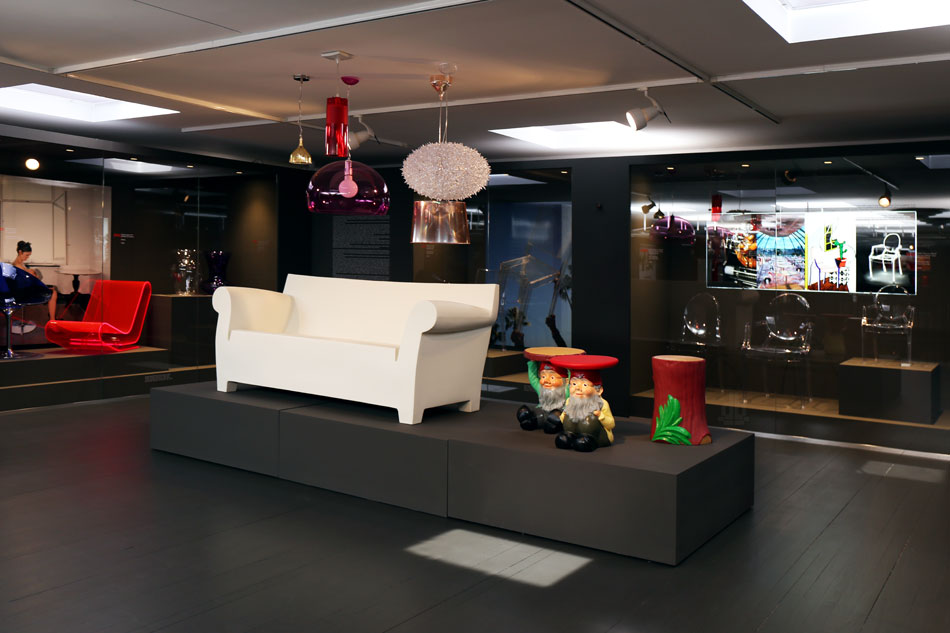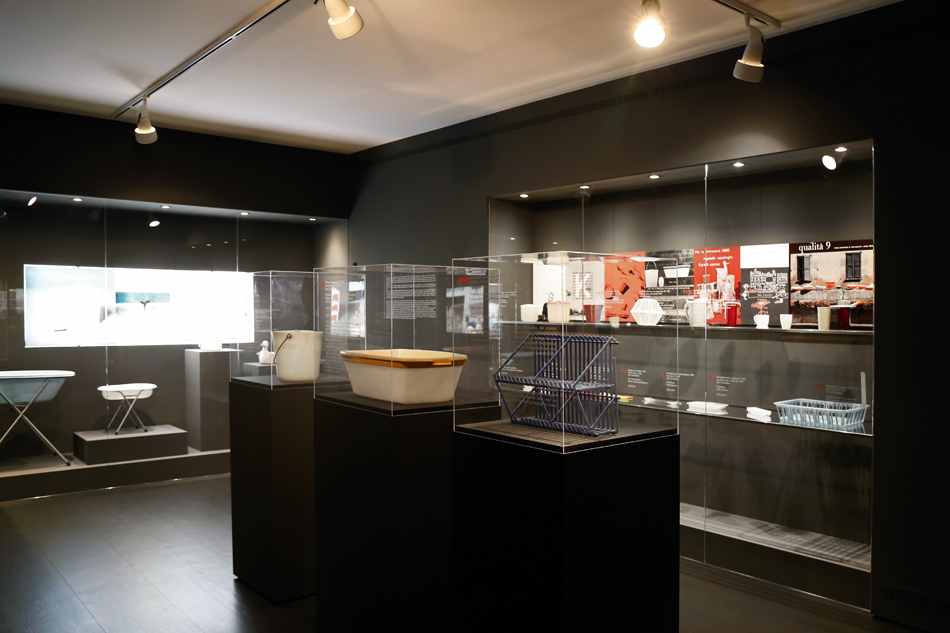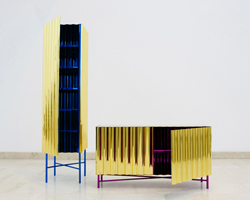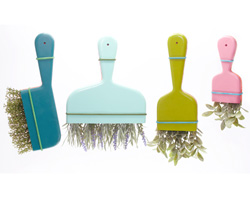the kartell museum opens its doors to the public with a completely new look
image © designboom
the kartell museum opens its doors to the public with a completely new look.
the new design leads to an exciting visual and experiential trip through the culture of kartell design.
for its fifteenth anniversary the kartell museum has been radically re-designed to tell the whole story of the company from 1949 to 2015 and has not only its permanent exhibition of all its most important products but a new exhibition area at the ground floor entrance as well which will house the temporary exhibitions and installations in addition to special and cultural projects promoted by the company in recent years.
in 1999, on the occasion of the company’s fiftieth anniversary, claudio luti founded the kartell museum, bringing to life one of the richest corporate museums in italy.

claudio luti, president of kartell
portrait © designboom
‘I’m pleased to reopen the renovated museum, 15 years after its creation. just like 15 years ago when I wanted to create this special area inside the company, today I believe it is essential that we work to preserve and promote our company’s history. for kartell, the museum is a priceless heritage; it is the custodian not only of objects that have played a role in our history, revolutionising the relationship between function and aesthetics in every period, but have played an important archiving and cataloguing role in recent years to save every little piece of history. over the years, we’ve collected iconic products and prototypes, graphics and communications that were part of a strategic dialogue between kartell and the market. the museum is the company’s soul, its experience and its wealth. the museum is the kartell that was and that can be. people may be able to copy our chairs or tables, but they’ll never be able to steal our history. the ‘kartell museo’ contains more than a thousand products and occupies over 2,500 square metres of space, within the museum there is a vast array of virtual images and historic data available for educational and research purposes and which we hope will continue the useful dialog with other companies and museums around the world, ultimately contributing to the vitality and progress of the industry.’ – claudio luti
kartell’s first product was the ‘K 101’ ski rack by carlo barassi and roberto menghi. employing the slogan, ‘attach, travel, detach, reattach’, the design could be easily mounted, unlike the unwieldy contraptions then sold on the market.

the ‘K 101’ ski rack designed by carlo barassi and roberto menghi
image © designboom
after its initial foray into the area of automotive accessories, kartell determined that it would do business in the field of plastics, which do not occur as natural substances with an identity prior to processing. rather, they take on a wholly artificial identity, and thus a cultural connotation, through design. design has always played an essential role: this means that every product is in some measure innovative either through its typology -an attempt to interpret the rapid transformation of social and cultural needs-, or because of a technological determination relating to the economy of the materials and the efficiency of the process. kartells’s first winning idea was to introduce plastic to the home through the housewares and lighting divisions and to intensify technological research.
the new museum tells its story using integrated approaches: the chronological story is interwoven with the emotional side to communicate the essence of kartell, always the innovator, the outsider, halfway between furnishings and fashion, always anticipating technologies, functions, trends and styles. theme routes and details on certain products or unique pieces find their place along the more traditional chronological route to help visitors take in and dwell on some particularly symbolic stages in the company’s history: one example is the room dedicated to homeware from the 1950s when plastic first began to be used in the home, or the room with transparencies displaying 15 years of the use of injection moulding technology in a single transparent polycarbonate mould where kartell is the undisputed leader.

kartell’s plastic production on full display at the museum
image © designboom
spotlights, large showcases for the products, blowups of advertising campaigns, vintage and artistic photographs and video projections – these are some of the components of the exhibition intended to engage the emotions of visitors.
it is hoped that a visit to the museum with its new look will be a ‘stroll’ down an experiential pathway through the periods and the history of italian and international taste and will provide information on the design aspect of the objects but, most of all, that it will arouse emotions and call up memories and affections. the emotional side of design which has been so sensational in the recent transparent pieces of furniture is thus brought out also by objects which have by now become historical items from the past.
the permanent exhibition includes cult pieces, veritable icons whose ‘plasticity’ is an intrinsic, design and aesthetic value and touches the heart not only of design lovers… and many world records.

the world’s first plastic chair: children’s chair K 1340, then K 4999, designed by marco zanuso, richard sapper, 1964
image © designboom

detail of the world’s first plastic chair and its stacking and storage capabilities
image © designboom
an ode to kartell
‘usually one thinks of a museum as a static space containing a collection or a set of objects. however, when one walks into a corporate museum, such as the one that kartell has created, it is an encounter with a space that, in addition to being a historical repository, coexists and grows with the company as new items are incorporated each year.
legend has it that in the late forties and early fifties, a few architects, highly talented but unemployed, had a chance encounter with a few enlightened entrepreneurs in search of products. right at this time behind the scenes, the chemical and mechanical industries were overflowing with innovations waiting for harnessing and application. together, these architects and entrepreneurs created a tradition of active collaboration founded on the sharing of technical know-how, dreams and objectives; such sharing became a model which would bear fruit in later decades. indeed, the best exemplars of italian design would reflect this close collaboration which, even today, provides designers from all over the world with tremendous support so that they can experiment. kartell and all those involved with company, from giulio castelli, founder, to designer anna castelli ferrieri, to nobel prize-winner and mentor giulio natta, to the lesser known little giants such as gino colombiani, to claudio luti and to the parade of today’s design celebrities, deserve to be a part of the legend. in the more than fifty years of the kartell’s existence, these individuals populated our world with new items with forceful personalities. they promoted technological progress and changed our lifestyle. they generated beauty and innovation and, above all, surprise. however, it’s about time that the objects themselves are given a chance to tell their story. this museum, one of the most remarkable of its kind, is an ode to plastic and the history of italian design.’ – paola antonelli curator, department of architecture and design – MoMA, new york

the world’s first chair made from ABS (the first chair in plastic for adults): chair universale 4867, designed by joe colombo, 1967
image © designboom
the ‘universale chair designed by joe colombo was the first single injection moulded seat in ABS, later manufactured in nylon and then in polypropylene. the chair was dubbed ‘universale’ because, as the advertising slogan went, ‘it never ages, never breaks, can be thrown out the window, left outside, immersed in water, transported to the north pole or the desert, and it will be always look like new‘.

image © designboom

‘901’ plastic tables and ‘rochetto’ stool by achille castiglioni
image © designboom

the world’s first product made from injection moulded ABS: modular storage containers, designed by anna castelli ferreri, 1967
image © designboom

cylindrical versions of ferreri’s modular storage units, the compartments are easily closed by sliding doors
image © designboom

a view into the exhibition
image © designboom

a view into the exhibition
image © designboom

the world’s first chair made from polypropylene with sharp corners and a matte finish: dr. glob chair, designed by philippe starck, 1988
image © designboom
the ‘dr. glob’ chair by philippe starck modified kartell’s attitude regarding plastic, introducing new concepts such as opacity, touch, colour, personalized colour, combinations of different variants, thickness and edges to the material. it is made from batch-dyed polypropylene seat and epoxy powder coated steel tube frame.

‘dr. glob’ chairs and ‘miss blau’ table by philippe starck
image © designboom

the world’s first flexible bookshelf not in a straight line: bookworm, designed by ron arad, 1994
image © designboom
ron arad’s ‘bookworm’ was the first flexible bookcase that could be freely configured, ‘a release from slavery to the straight line’. it is made from a wall-mount flexible extruded PVC sheet.

‘bookworm’ by ron arad, 1994

the world’s first chair made from polypropylene that did not have any sustaining back supports: maui chair, designed by vico magistretti, 1996
the ‘maui’ chair designed by vico magistretti was the first single-mould seat with no metal fittings or ribbing to support the backrest, made from exclusive flexible and durable polypropylene.

‘mauna kea’ and ‘maui’ chair designed by vico magistretti for kartell
image © designboom

kartell chairs through the ages…
image © designboom
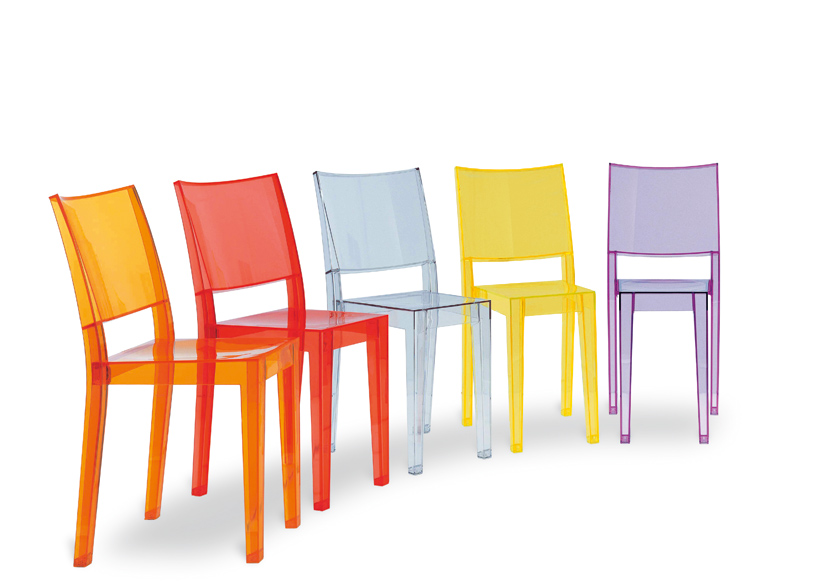
the world’s first single moulded chair made from polycarbonate: la marie, philippe starck, 1999
‘la marie’ by philippe starck was the first single-moulded chair made from polycarbonate. it expresses an ingenious combination of a light, yet robust design marking a revolution in the use of plastic surfaces, introducing the concept of transparent materials into interior design.

‘la marie’ demonstrating its transparency and lightness at the kartell museum
image © designboom

‘4875’ chair by carlo bartoli
image © designboom
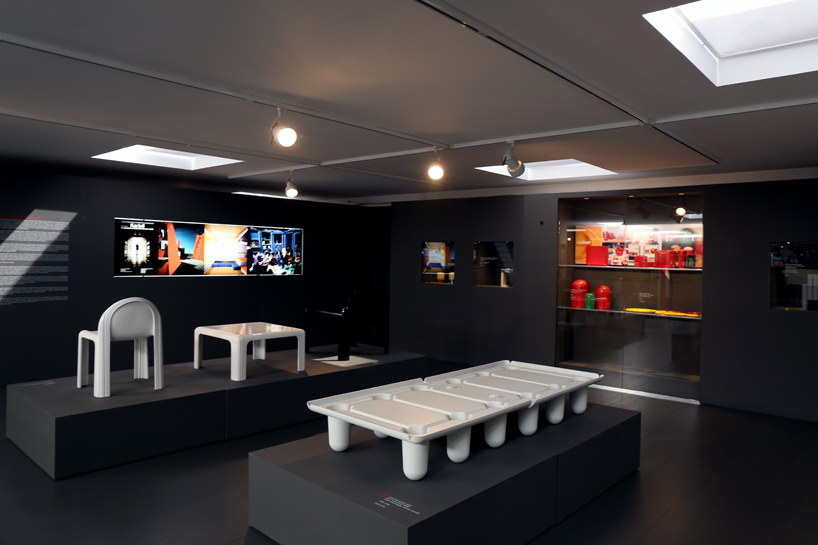
demonstrating the possibilities of injection moulded plastic
image © designboom

the world’s first rotation moulded plastic sofa: bubble club, designed by philippe starck, 2000
image © designboom
philippe starck developed the world’s first rotation moulded plastic sofa, ‘bubble club’. it won the compasso d’oro, and the jury’s reason for awarding it the prestigious prize was: ‘this item, with its mnemonic form and ironic tone, has incorporated sophisticated techniques in product execution, present consumers with a product that fully meets any required function at a very affordable cost.’

the world’s first single-moulded polycarbonate sofa: uncle jack, philippe starck, 2014
image © designboom

the accompanying ‘uncle jack’ armchair by philippe starck
image © designboom

a real record for this material in single mould injection moulding, philippe starck’s ‘uncle jack’ sofa
image © designboom

view of the three storey museum. the exhibition is housed in the extraordinary building in the rationalist style designed by anna castelli ferrieri and ignazio gardella in 1968 and which has been general headquarters for kartell ever since and home to the museum since its foundation in 1999.
image © designboom
today’s permanent exhibition curated by elisa storace (already curator of the museum) followed ferruccio laviani’s plans which kept the chronological division of the rooms functional to the exhibition (as he had designed them for the previous exhibition in 2000) leaving ample space on the ground floor for theme exhibitions dedicated to contemporary and extemporary projects – like the special projects and communication.
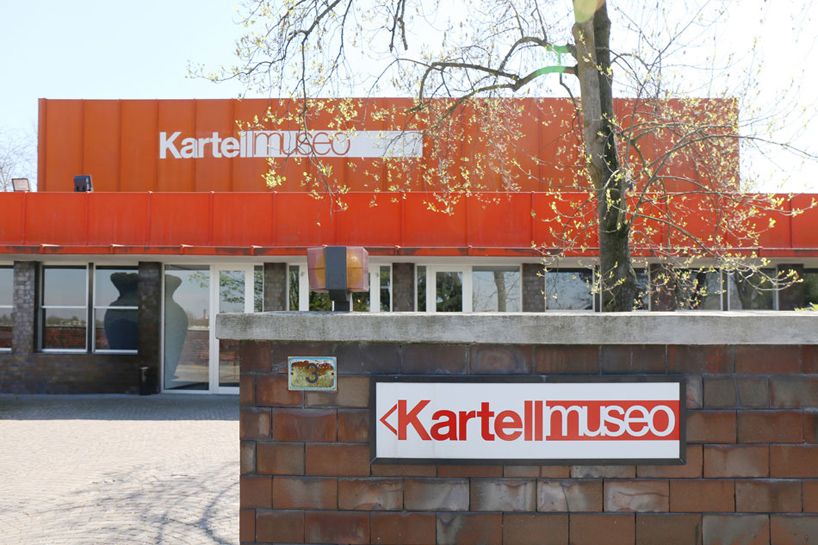
kartell museo
image © designboom
kartell museum
via delle industrie, 1
20082 noviglio (milan)
(milano-genova tollway, binasco exit)
during milan design week 2015
opening hours: from 14 to 19 april – from 10:00 to 20:00
saturday, 18 april a shuttle service will run from milan turati metro stop at 14:30 by reservation only

